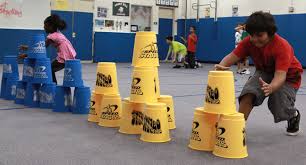Get your minds out of the locker room! I’m talking about your Sales Stack! Is it big enough, is it bigger than others in your industry?
I suppose it’s not surprising, but there’s a lot of talk about the importance of sales stacks. As you would expect, much of it is driven by the vendors of sales technology tools. Apparently, at least according to them, the secret to sales success is the number of sales technology tools an organization deploys–less the strategies the organizations deploy in engaging customers in meaningful ways.
As an example, recently a vendor sent an offer for quick audit of our technology stack. Out of curiosity, I decided to take it. It asked how large our sales organization is, then went through a series of questions about whether we leverage diallers, sequencers, email automation tools, conversational intelligence, and a bunch of other stuff.
It didn’t ask anything about what we did, our target customers, our performance against goals, or the challenges we face in growing our business, our engagement processes, and our aspirations for growth. Apparently, those things are irrelevant to understanding how we can best leverage sales technologies in supporting our ability to achieve our goals.
I answered the questions as well as I could, even though most were irrelevant to our business and what we are trying to do.
I’m almost ashamed to tell you our score. Apparently, 75% of organizations have a sales stack that is more mature than ours. I was immediately directed to resources on sequencers, high performance diallers, AI based conversational intelligence tools. I guess we need to get in line, doing what all the cool kids are doing and investing in a much bigger sales stack.
The results of the survey was intriguing to me. Without any understanding of our business, our sales stack is, apparently, immature relative to other sales organizations. We are, actually, big fans of leveraging technology, we subscribe to a number of tools, both to help us in our selling process and our service delivery. We, also, have a number of proprietary tools we leverage with our clients.
I’m proud of our business results. We have high win rates and deal sizes, we have continued to grow at relatively high rates. As CEO, I’m happy with our continued ability to grow, exceed our goals, and create great value with our clients. But apparently, we missing out. Our tech stack isn’t big enough, we seem to need to spend more on tools.
I wonder about the performance of those 75% of organizations having much richer sales stacks than us. Are they consistently exceeding goals? How have these tools positively impacted performance? Or more simply, are the sales people actually using these tools?
We see all sorts of data about sales stacks, but we also see data about the low utilization of these technologies. Anecdotally, in 80% of our projects, CRM utilization is a huge issue. The other tools fair worse. An even bigger issue with these organizations is: Do managers use these these tools?
This survey displayed an attitude so many of these vendors have about sales/marketing automation. It’s more about the automation, not the results the organization achieves. This vendor, didn’t need any information about our business, our strategies, our goals. They didn’t need to understand where we may be struggling. All they needed to know is how many tools we are using and whether our tech stack was big enough.
Sales organizations are struggling. Performance to goal, engagement, sales person turnover/attrition, cost per order dollar, customer retention/satisfaction and growth are all going in the wrong direction. Customers actively express preferences for rep-free buying experiences. Yet we are spending more and more on our sales stacks–that our sales people aren’t effectively leveraging.
It’s time to stop the insanity!
Selling tools can be very powerful, but let’s stop measuring success by how big our tool stacks are.

Leave a Reply